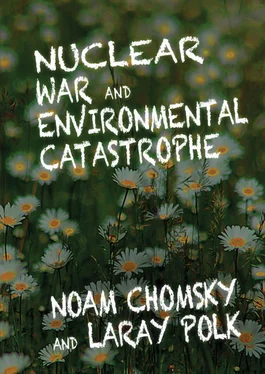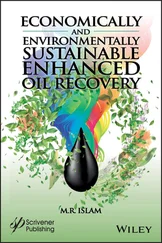Louis Charbonneau, “U.S. and Other Big Powers Back Mideast Nuclear Arms Ban,” Reuters, May 5, 2010.
Diego Garcia is home to one of five monitoring stations used to operate NAVSTAR GPS. Other terrestrial locations in the network include Hawaii, Colorado, Ascension Island, and Kwajalein Atoll. Implemented by the Department of Defense in 1973, NAVSTAR GPS is a radio-navigation system that utilizes satellite to ground triangulation to provide precise geospatial coordinates for both military and civilian use (i.e., vehicle and cellular map locator). The system is usually referred to in its shortened form, GPS. “The Global Positioning System,” National Academy of Sciences, 1997. The permanent eviction of the inhabitants of Diego Garcia (ca. 1973) to make way for US military operations is a continued issue of contention. Recent news of the UK government’s plan to create a marine protection area has further inflamed the issue; a leaked diplomatic cable confirmed suspicions it was a move to deny Chagossians the right of return: “BIOT’s former inhabitants would find it difficult, if not impossible, to pursue their claim for resettlement on the islands if the entire Chagos Archipelago were a marine reserve.” WikiLeaks , s.v. “Cable 09LONDON1156, HMG Floats Proposal for Marine Reserve Covering,” May 2009. On GPS and Kwajalein Atoll, see Vltchek, note 1, chap. 3.
In 2009 the Pentagon sent an “urgent operational need” funding request to Congress to fast-track the development and testing of the Massive Ordnance Penetrator (MOP), a thirty-thousand-pound bunker-busting bomb designed to hit underground targets. It was listed inside a ninety-three-page “reprogramming” request with hundreds of other items, and approved with little fanfare. Jonathan Karl, “Is the U.S. Preparing to Bomb Iran?,” ABC News, October 6, 2009. On shipment of bunker-busting bombs to Diego Garcia, see Rob Edwards, “Final Destination Iran?,” Herald (Scotland), March 14, 2010.
John J. Kruzel, “Report to Congress Outlines Iranian Threats,” AFPS (Defense.gov), April 20, 2010.
See National Security Archive Electronic Briefing Book No. 255, “New Kissinger ‘Telcons’ Reveal Chile Plotting at Highest Levels of U.S. Government.”
Under the leadership of Mohammed Mossadeq, Iran sought “increased benefits” from its resources, including a nationalized oil industry. A. A. Berle, former advisor to FDR, sent a dispatch to a friend in the State Department, stressing access to Persian Gulf oil translated to “substantial control of the world,” and suggested an “appropriate formula” would be needed for intervention. The CIA launched Operation Ajax, staging acts of provocation aimed at ousting Mossadeq. In a coup on August 19, 1953, the goal was achieved: “The full consequences of that 1953 day when the shah was ushered back from exile have, indeed, never ended either for Iranians or Americans. For a quarter century [Shah] Reza Pahlavi controlled both his country and, it can be argued, American policy. He became one of the biggest customers ever for American military products, …Iran now became not simply an oil-bearing state, but also an aid in redressing other Cold War dilemmas, especially the efforts to overcome Vietnam-induced economic problems.” Lloyd C. Gardner, Three Kings: The Rise of an American Empire in the Middle East After World War II (New York: New Press, 2009), 96–132.
“Iran Says Uranium to Go to Turkey, Brazil for Enrichment,” Voice of America, May 17, 2010; David E. Sanger and Michael Slackman, “U.S. Is Skeptical on Iranian Deal for Nuclear Fuel,” New York Times , May 17, 2010.
Journalist Zoher Abdoolcarim describes the disputes as a complex of regional relationships: “When it comes to feuds in the Pacific over islands and what lies beneath, it’s not simply a case of China against everyone else. Depending on the dispute, it’s also South Korea vs. Japan, Japan vs. Taiwan, Taiwan vs. Vietnam, Vietnam vs. Cambodia and numerous other permutations—for many of the same reasons supposedly behind China’s actions. Resource grab. Patriotic posturing. Historical baggage (mostly to do with Japan’s brutal occupation of most of East Asia before and through World War II)…. Amid East Asia’s island fever, there’s big and small, strong and weak, rich and poor, and enlightened and unenlightened self-interest. But not as innocent as good vs. evil.” “Why Asia’s Maritime Disputes Are Not Just about China,” TIMEWorld (World.Time.com), August 19, 2012.
On tensions between free-trade agreements and the “higher values of the protection of the earth and people’s livelihoods,” see Vandana Shiva, Stolen Harvest: The Hijacking of the Global Food Supply (Cambridge, MA: South End Press, 2000). On the export of carbon dependency, see Bharti Chaturvedi, “Debate over FDI in Retail, Durban Talks Are Linked,” Hindustan Times , December 4, 2011.
Jeju Island, located in the Korean Strait, is being prepared as “an expansive base which would be home to 20 warships and submarines and would serve as a strategic component in the U.S. military’s sea-based ballistic missile defense system.” In July 2012, the Indian Navy announced a new base on the Andaman and Nicobar Islands as a means to patrol the Malacca Straits, one of the busiest sea-lanes in the world. In 2006, the Hindustan Times reported plans for the base came from the US, “given its growing comfort level with India and their growing strategic relationship, [the US] is delegating to New Delhi a role that would have been unthinkable even a few years ago.” Democracy Now! , “South Korea Cracks Down on Resistance to Jeju Island Naval Base Project,” July 19, 2011; “Indian Navy Awaits Regional Nod for Patrolling Malacca Straits,” Hindustan Times , June 7, 2006. On US-India civilian nuclear deal, see note 5, this chapter.
Yoni Cohen, “Green Startups Target the Department of Defense ,” GreentechMedia.com, March 11, 2011; Martin LaMonica, “Five Things We Learned at the ARPA-E Summit,” CNet.com, February 29, 2012; and Bruce V. Bigelow, “Navy Draws Heavy Media Coverage for Biggest Biofuel Sea Trial,” Xconomy.com, November 21, 2011.
Since the late 1980s the Pentagon has been working on transforming the infantry soldier into a complete weapons system, currently referred to as Future Force Warrior. Work is conducted at MIT (ISN) and UC Berkeley (BLEEX). Based on projected trends in a “future security environment,” Future Force Warrior is being readied for climate change and natural disasters, rising resource demands, and the proliferation of WMDs. The program’s research investment has “demonstrated commercial spin-off benefits for the nation’s civilian economy.” US Army Natick Soldier Research, Development & Engineering Center (Nsrdec.Natick.Army.Mil), s.vv. “NSRDEC Future Soldier 2030 Initiative,” “Doing Business with Us.” On nanotech and federal funding, see notes 11 and 12, chap. 2.
The US Weatherization Assistance Program (WAP) is limited to serving low-income households at or below 150 percent of the poverty guidelines. DOE, Energy Efficiency & Renewable Energy, s.v. “Weatherization & Intergovernmental Program.”
According to Bloomberg, one source of loans and credit lines for China’s green technology, CDB, has “more than twice the World Bank’s assets.” CDB funds Sinovel, Xinjiang Goldwind, Suntech, and China Ming Yang Wind. Natalie Obiko Pearson, “China Targets GE Wind Turbines with $15.5 Billion War Chest,” Bloomberg.com, October 14, 2011. The US imported $3.1 billion worth of Chinese solar cells in 2011; in March 2012 the US Department of Commerce announced a tariff on imported Chinese solar cells and panels after seven manufacturers filed a complaint alleging: “illegal government subsidies have made it possible for Chinese companies to gain unfair trade advantages. The subsidies include loans, lines of credit, tax breaks, and favorable terms for insurances, land and utility costs.” Ucilia Wang, “Obama Administration to Impose Tariffs on Chinese Solar Panels,” Green Tech (blog), Forbes, March 20, 2012. See also “Green Dragon Fund (GRNDRGN: KY),” Bloomberg.com.
Читать дальше












